
Tonight’s hearing to focus on Trump’s actions
Here’s what to watch for during today’s prime-time Jan. 6 committee hearing
From CNN’s Jeremy Herb, Ryan Nobles, Zachary Cohen and Annie Grayer
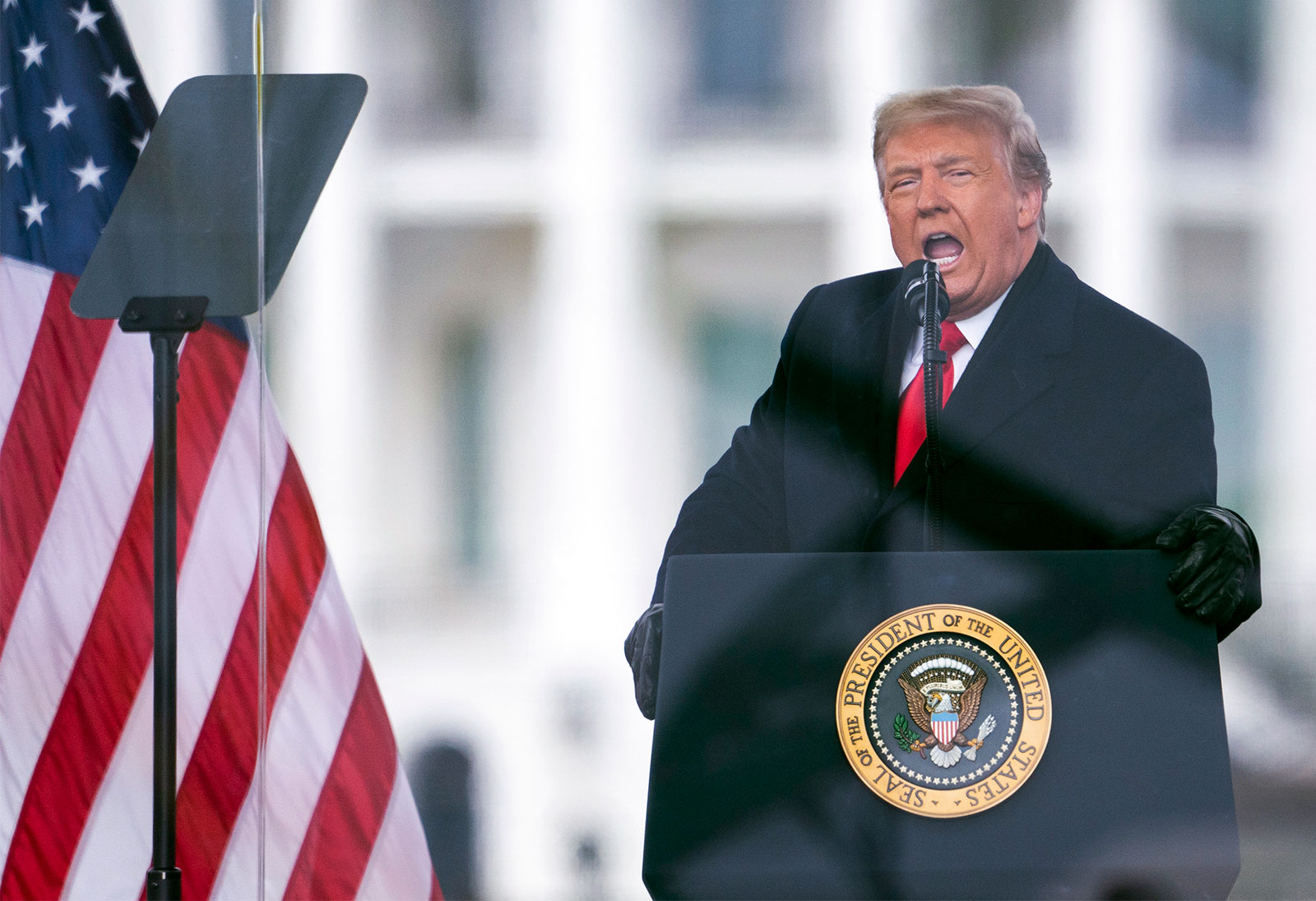
The House select committee investigating Jan. 6, 2021, is returning to prime time for its eighth hearing that will seek to show in minute-by-minute detail how former President Donald Trump failed to act while the US Capitol was under attack.
The committee’s focus at Thursday’s 8 p.m. ET hearing will be on the 187 minutes that elapsed between Trump concluding his speech at the Ellipse at 1 p.m. ET, when he told his supporters to march to the Capitol, to when Trump released a video at 4:17 p.m ET — when he told the rioters to leave the Capitol.
Committee aides say that the panel will show how Trump “refused to act to defend the Capitol” while rioters were attacking it. The committee has spoken with multiple former Trump aides who were with him that day — including former White House counsel Pat Cipollone — and their video depositions are expected to be used to help tell the story of what was going on inside the White House on Jan. 6.
Cipollone, for instance, told former White House chief of staff Mark Meadows that Trump needed to intervene or else “people are going to die,” former Meadows aide Cassidy Hutchinson previously testified.
Meadows responded by telling Cipollone that Trump “doesn’t want to do anything,” Hutchinson said, and that Trump even agreed with the rioters chanting about hanging Vice President Mike Pence.
The House is also expected to show clips of video outtakes of Trump recording a message to his supporters on Jan. 7, 2021, the day after the riot.
Two former White House aides who quit after Jan. 6 former deputy national security adviser Matthew Pottinger and former deputy press secretary Sarah Matthews — will testify at Thursday’s hearing, CNN has previously reported (the committee has not officially announced witnesses for the event).
Previous reporting from CNN and others, as well as excerpts from committee depositions that have been publicly released — have detailed how Trump was watching television outside the Oval Office as rioters breached the Capitol walls. Before Trump released his video telling the rioters to go home, he sent out several tweets that did not tell them to leave the Capitol — as well as one attacking Pence for not joining his scheme to try to overturn the 2020 election.
On Thursday, GOP Rep. Adam Kinzinger, a member of the Jan. 6 committee who will be leading the hearing, tweeted new video clips from depositions of Trump aides describing how he watched the Capitol riot unfolding on TV in his private dining room.
The deposition clips are from White House Counsel Pat Cipollone, Pence’s national security adviser Keith Kellogg, Trump’s executive assistant Molly Michael, and White House press secretary Kayleigh McEnany.
Read more about what to watch for at today’s hearing.
The panel will focus tonight on what Trump was doing during the riot. These are the big unanswered questions.
From CNN’s Jeremy Herb and Marshall Cohen

The House Jan. 6 committee’s prime-time hearing Thursday is all about 187 minutes.
That’s the period of a little more than three hours as the riot unfolded in the US Capitol — starting from when his speech at the Eclipse ended to when he sent a tweet telling people to leave the Capitol.
While lots of details about Trump’s response on Jan. 6, 2021 are already known, there are still lingering questions about what the former President was doing.
For instance, Trump spoke with at least two Republican lawmakers during the early stages of the insurrection: House Minority Leader Kevin McCarthy, a California Republican, and Alabama Sen. Tommy Tuberville.
While there has been previous reporting about McCarthy’s heated phone call, including that Trump told him that the rioters were “more upset about the election than you are,” McCarthy has not spoken at length about the conversation. The committee issued a subpoena to McCarthy and four other lawmakers in an unprecedented move earlier this year, though McCarthy has not agreed to testify or hand over documents.
Questions also remain about who else Trump spoke with by phone on Jan. 6 during the period when the Capitol was breached. There are gaps in the White House call logs on Jan. 6, providing incomplete public accounting of the conversations Trump had that day.
Another key question the committee is likely to dive into is how it was that former Vice President Mike Pence — and not Trump — who ordered the National Guard to respond to the riot. At a hearing last month, the committee played testimony from Chairman of the Joint Chiefs Gen. Mark Milley saying it was Pence who gave him “very direct, unambiguous orders” to get the Guard to the Capitol.
But Milley testified that Meadows told him to say that it was Trump, not Pence, who gave the order.
“He said: We have to kill the narrative that the Vice President is making all the decisions,” Milley said in his video deposition about what Meadows told him. “We need to establish the narrative, you know, that the President is still in charge and that things are steady or stable, or words to that effect.”
Read more about what unfolded during the 187 minutes here.
The DHS inspector general told Secret Service to stop investigating potentially missing texts, letter shows
From CNN’s Whitney Wild and Jeremy Herb
The Department of Homeland Security inspector general directed the Secret Service to stop its internal investigations into what happened to text messages related to Jan. 6 that may have been deleted, according to a letter reviewed by CNN.
The inspector general wrote that the Secret Service should stop investigating the matter because it could interfere with the inspector general’s own investigation into what happened to the agency’s text messages.
The letter adds to the growing tension between the Secret Service and the DHS inspector general over the potentially missing text messages, which are being sought by the House select committee as part of its investigation into former President Donald Trump’s actions and movements on Jan. 6, 2021.
“To ensure the integrity of our investigation, the USSS must not engage in any further investigative activities regarding the collection and preservation of the evidence referenced above,” DHS deputy inspector general Gladys Ayala wrote in a letter to Secret Service Director James Murray on Wednesday evening. “This includes immediately refraining from interviewing potential witnesses, collecting devices or taking any other action that would interfere with an ongoing criminal investigation.”
The inspector general wrote that the Secret Service should explain what interviews had already been conducted related to the text messages, along with the “scope off the questioning, and what, if any, warnings were given to the witness(es).” The inspector general told the Secret Service to respond by Monday.
The new letter comes after the Secret Service was only able to provide a single text message to the inspector general, who had requested a month’s worth of records for 24 Secret Service personnel, according to a letter to the select committee.
Read more here.
You likely will hear the panel reference the “187 minutes” that unfolded on Jan. 6. Here’s what it means.
From CNN’s Jeremy Herb and Marshall Cohen
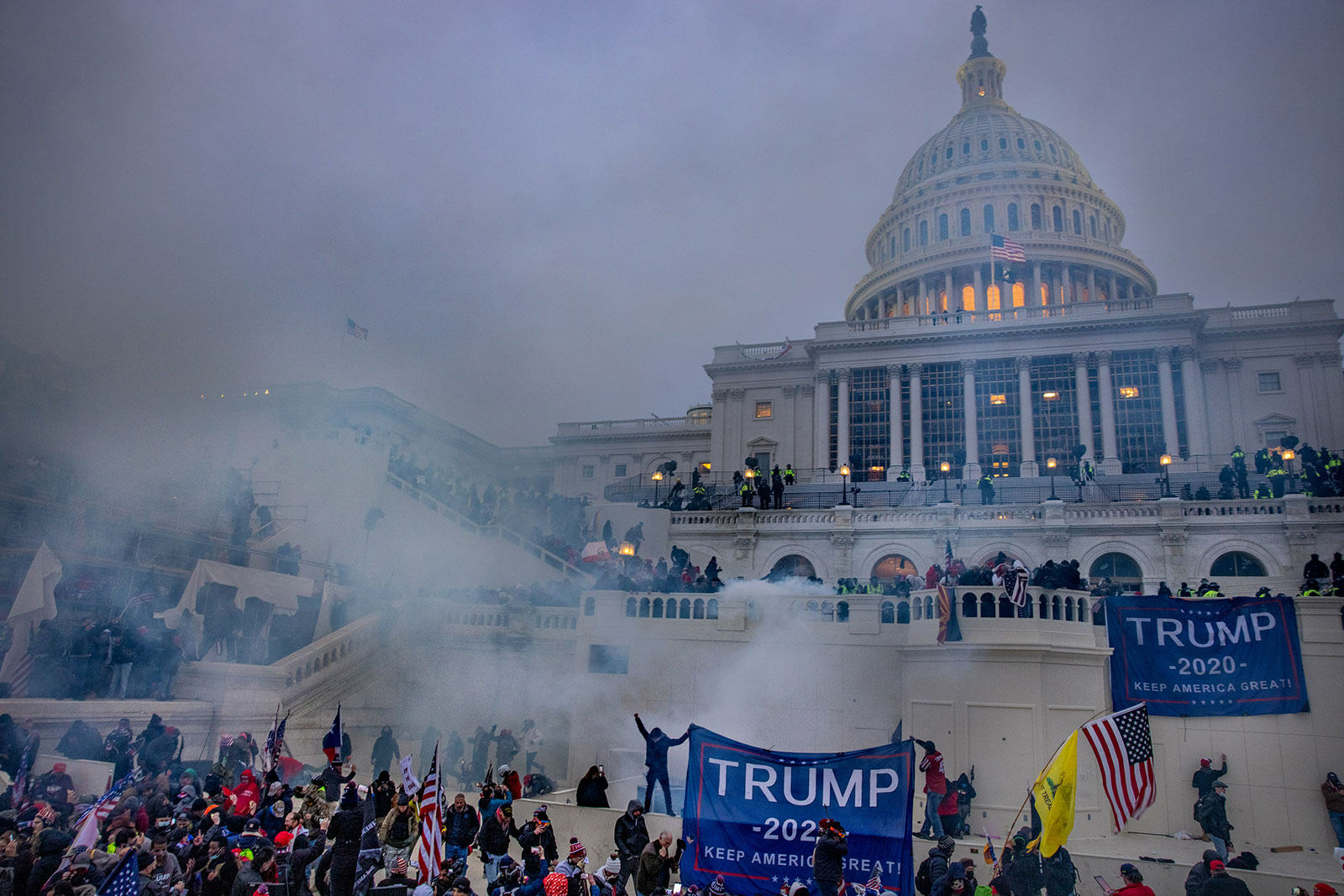
Tonight’s Jan. 6 select committee hearing will focus on what lawmakers have dubbed the “187 minutes” – the three-plus hours when then-President Donald Trump did not step in to stop the US Capitol riot on Jan. 6, 2021.
Democratic Rep. Elaine Luria of Virginia, who will be leading Thursday’s hearing with GOP Rep. Adam Kinzinger of Illinois, told CNN the committee will “go through pretty much minute by minute” of Trump’s actions. “He was doing nothing to actually stop the riot,” the Virginia Democrat told CNN’s Dana Bash on “State of the Union” on Sunday.
In the previous hearings, the committee has sought to tie Trump to the violence at the Capitol, showing how he was warned by his aides that his claims the election was stolen were baseless and that there was a risk of violence on Jan. 6, 2021. The committee’s final hearing in this series will attempt to illustrate how the former President “refused to act to defend the Capitol as a violent mob stormed the Capitol,” according to committee aides.
Here is when the window of time begins and when it ends:
The 187 minutes began at 1:10 p.m. ET, in the final moments of Trump’s speech at the Ellipse, when he told his supporters to go to the Capitol.
“So we’re going to walk down Pennsylvania Avenue — I love Pennsylvania Avenue — and we’re going to the Capitol. And we’re going to try and give — the Democrats are hopeless, they’re never voting for anything, not even one vote. But we’re going to try and give our Republicans — the weak ones, because the strong ones don’t need any of our help — we’re going to try and give them the kind of pride and boldness that they need to take back our country. So let’s walk down Pennsylvania Avenue,” Trump said.
After leaving the stage at the Ellipse, Trump got into his motorcade and angrily tried to convince his drivers to take him to the Capitol, according to testimony from Trump White House aide Cassidy Hutchinson. The agents refused, telling him that the scene was too dangerous and unstable.
Trump then watched TV news coverage of the chaos unfolding at the Capitol, according to a book by Washington Post reporters Bob Woodward and Robert Costa, and according to then-White House press secretary Stephanie Grisham, who said Trump was “gleefully” watching the news.
Trump posted three tweets during this critical timeframe. The first tweet criticized Pence for refusing to overturn the election. The second and third tweets told the rioters to “stay peaceful” and to “respect the law” — but notably, Trump did not instruct his supporters to leave the Capitol.
During the 187 minutes, a wide array of Republican lawmakers, former Trump officials and conservative media personalities texted Meadows, saying Trump needed to intervene, CNN has previously reported.
And the 187 minutes ended at 4:17 p.m. ET, when Trump tweeted out a video telling his supporters to leave the Capitol. He also heaped praise on the rioters and repeated his debunked lies about the election, which had spurred the riot in the first place.
“I know your pain. I know you’re hurt. We had an election that was stolen from us. It was a landslide election, and everyone knows it, especially the other side, but you have to go home now. We have to have peace. We have to have law and order. We have to respect our great people in law and order. We don’t want anybody hurt. It’s a very tough period of time. There’s never been a time like this where such a thing happened, where they could take it away from all of us, from me, from you, from our country. This was a fraudulent election, but we can’t play into the hands of these people. We have to have peace. So, go home. We love you. You’re very special. You’ve seen what happens. You see the way others are treated that are so bad and so evil. I know how you feel. But go home and go home at peace,” Trump said in the video.
Why this matters: This timeframe is central to the committee’s mission. Republican Rep. Liz Cheney of Wyoming, the committee’s GOP vice chair, has repeatedly said that the evidence obtained by the panel about these 187 minutes provides a clear example of Trump’s “supreme dereliction of duty” throughout the insurrection.
The panel’s Democratic chairman, Rep. Bennie Thompson of Mississippi, said earlier this year, “The President was told, ‘You need to say directly to your people to go home, leave the Capitol.’ And so, it took over 187 minutes to make that simple statement. Something’s wrong with that.”
Read more about the 187 minutes here.
The Secret Service provided only 1 text exchange after request for many records
From CNN’s Jamie Gangel
The Secret Service was only able to provide a single text exchange to the DHS inspector general who had requested a month’s worth of records for 24 Secret Service personnel, according to a letter to the House select committee investigating January 6, 2021, whose details were first reported by CNN.
The revelation provides insight into the concern raised in a recent letter to Congress by the inspector general, who accused the agency of not retaining records needed for the January 6 investigation.
Inspector General Joseph Cuffari — having already received an initial batch of documents including “hundreds of thousands of disclosures of agency documents, policies, radio communications, emails, briefings and interviews” — requested in June 2021 text messages sent and received by 24 Secret Service personnel between Dec. 7, 2020 and Jan. 8, 2021, according to the letter, the details of which had not been previously reported. The letter does not identify the 24 personnel.
“The Secret Service submitted the responsive records it identified, namely, a text message conversation from former US Capitol Police Chief Steven Sund to former Secret Service Uniformed Division Chief Thomas Sullivan requesting assistance on January 6, 2021, and advised the agency did not have any further records responsive to the DHS OIG’s request for text messages,” Assistant Director Ronald Rowe wrote in the letter to the Jan. 6 committee.
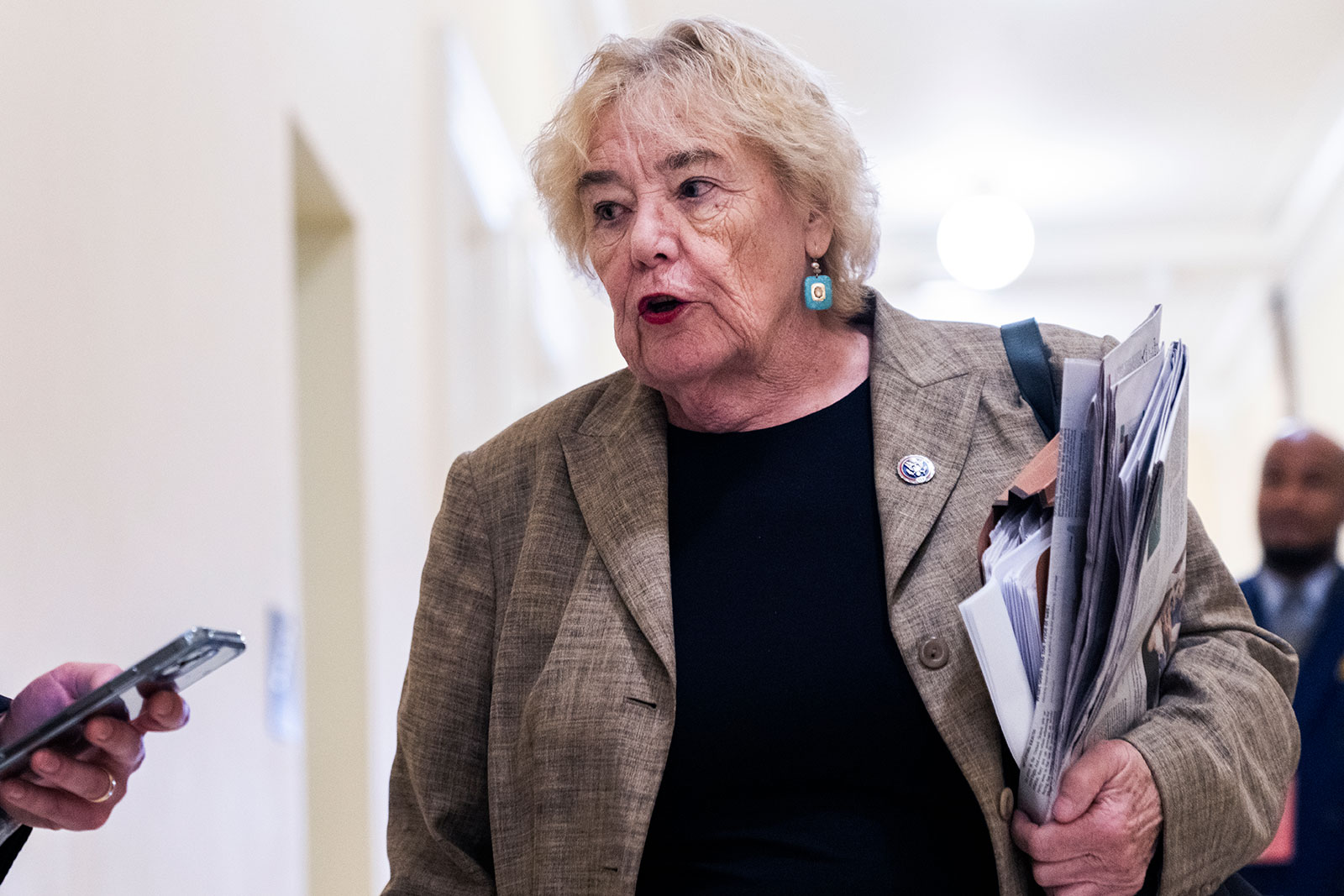
Rep. Zoe Lofgren, a California Democrat who is a member of the select committee, told CNN Wednesday that the information the Secret Service provided to the committee relating to January 5 and 6 specifically was “insufficient.” Lofgren added that the panel has “more requests for them.”
Lofgren said in an interview with MSNBC Tuesday that the panel had received “one text message” that she hadn’t yet seen but that the panel would be “pursuing more information as a committee soon.”
“In their letter they gave no indication that they have secured the phones in question and done some forensic work with them. That’s something we want to know,” Lofgren said. “This obviously, this doesn’t look good. Coincidences can happen but we really need to get t the bottom of this and get a lot more information than we have .urrently.”
Beyond the inspector general requests, the Department of Homeland Security was also sent a broad preservation and production re.t by Congr.on January 16, 2021, which asked for documents and materials related to January 6. That letter was addressed to DHS’s Intelligence and Analysis office but also noted it applied to “other appropriate components of the Department of Homeland Security.” DHS oversees the Secret Service.
Keep reading.e.
Clips from Pat Cipollone’s deposition could play an even larger role in Thursday’s hearing
From CNN’s Marshall Cohen, Jeremy Herb and Zachary Cohen
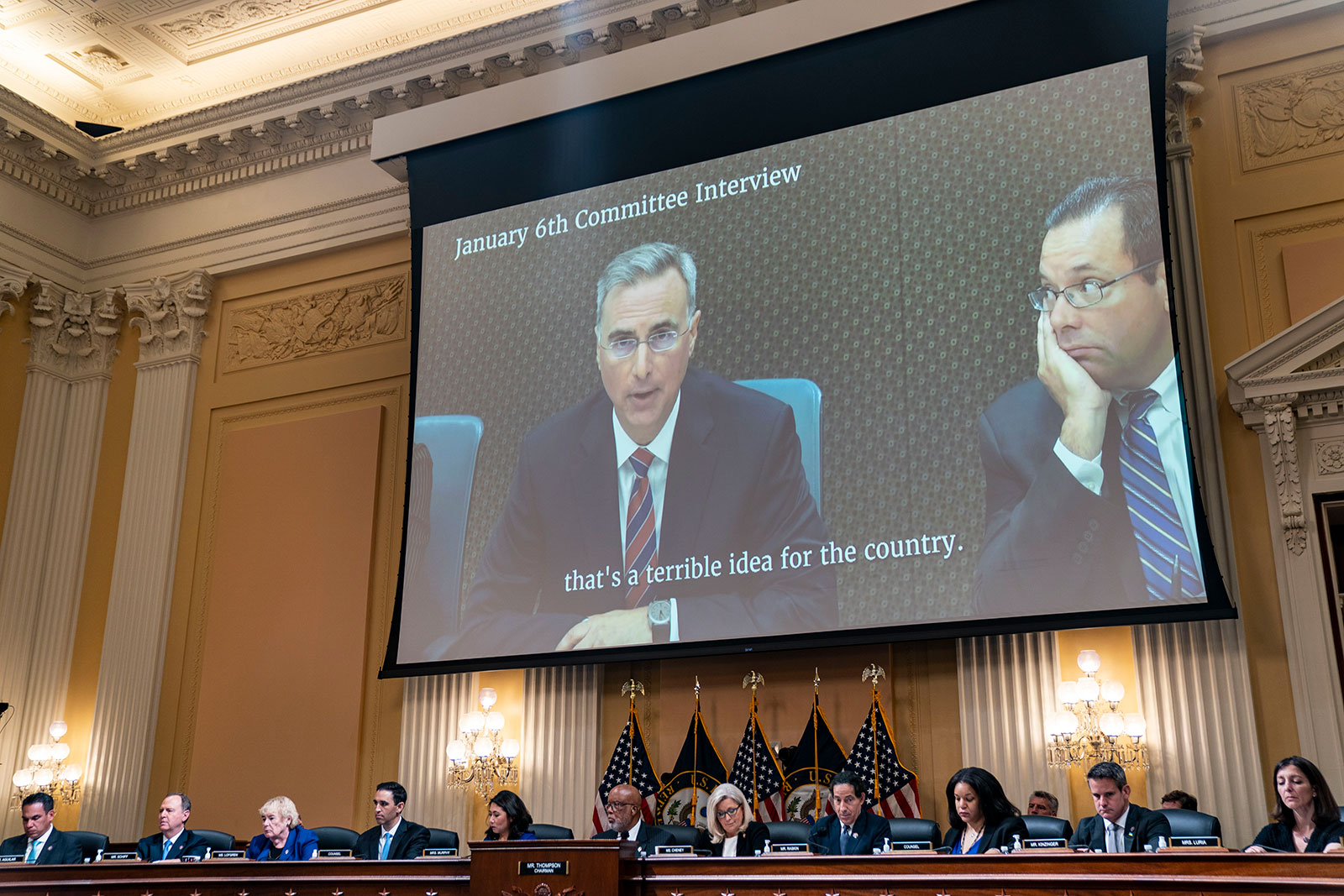
Last week’s Jan. 6 hearing was the select committee’s first chance to show video clips from former Trump White House counsel Pat Cipollone, who was interviewed by the committee in a video deposition earlier this month.
Cipollone’s testimony added a top voice to the chorus of former Trump aides who have testified to the committee they told the President there was no substantial evidence that the election was stolen from him.
The video clips of Trump’s former aides, which have been played throughout the Jan. 6 hearings, have helped the committee illustrate how those around Trump didn’t believe his baseless claims about the election, even as he continued to plow ahead with efforts to try to overturn the election leading up to Jan 6.
The committee issued a subpoena to ultimately obtain Cipollone’s video testimony after he was called out at an earlier hearing for not agreeing to sit for a deposition. The committee played 14 clips from Cipollone’s pivotal eight-hour interview, which highlighted the split that had grown between Trump and his highest-ranking legal adviser.
In the clips played during the committee’s last hearing, Cipollone said he was told by then-chief of staff Mark Meadows that in November 2020 Trump would eventually agree to make a graceful departure, that he believed Trump should concede, and that he argued the proposal for the federal government to seize voting machines was a “terrible idea.”
“That’s not how we do things in the United States. There’s no legal authority to do that,” Cipollone said. “There is a way to contest elections. You know, that happens all the time. But the idea that the federal government could come in and seize election machines — I don’t understand why I would even have to tell you why that’s a bad idea for the country. That’s a terrible idea.”
There were numerous clips of Cipollone’s interview played, but he could play an even larger role in Thursday’s hearing that is expected to focus on what was going on inside the West Wing while the Capitol attack occurred on Jan. 6.
Read more about last week’s hearing and Cipollone’s deposition here.
Key things the Jan. 6 committee has revealed in its hearings so far
From CNN’s Zachary Cohen, Annie Grayer and Ryan Nobles
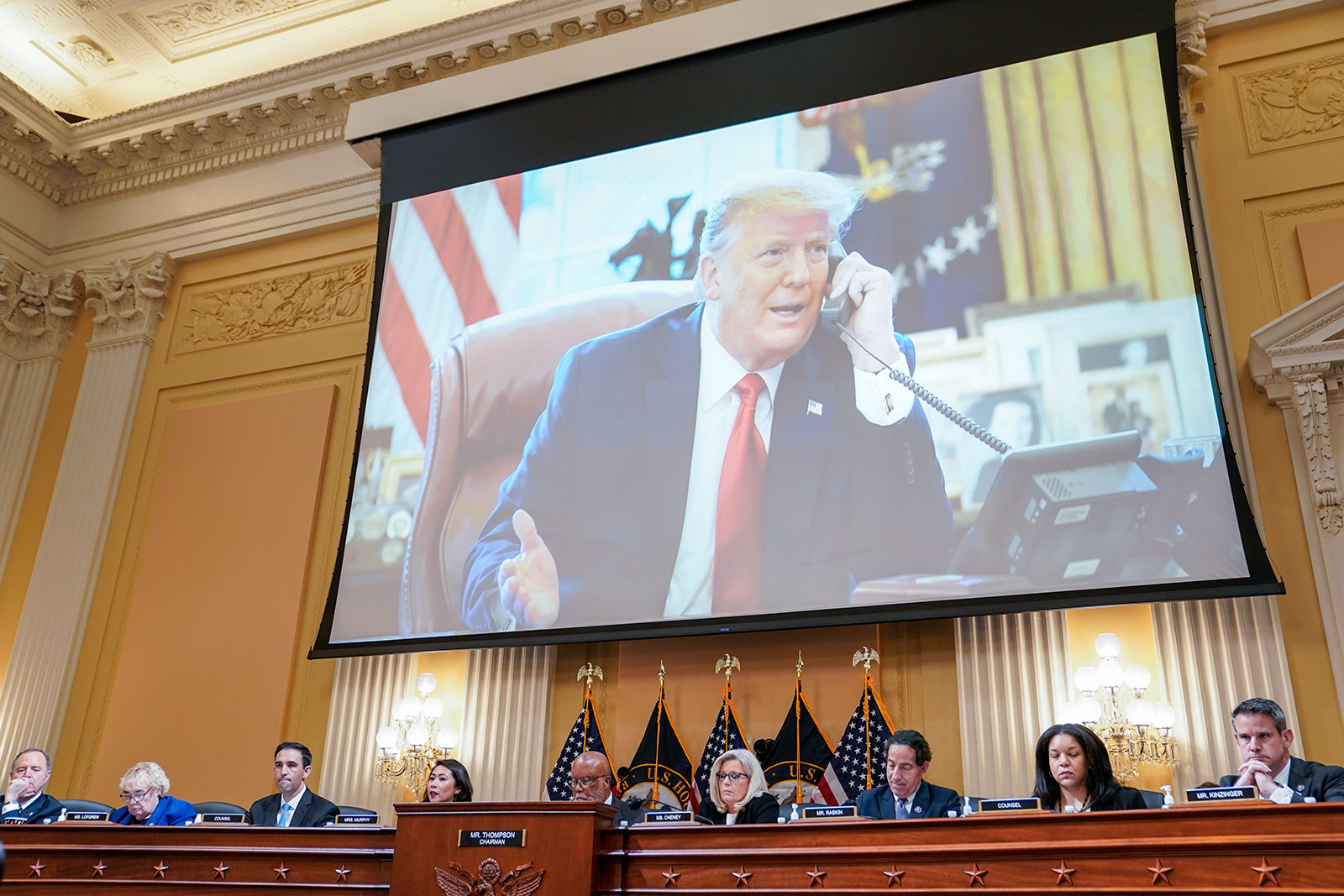
The House committee investigating the Jan. 6 insurrection will hold its last scheduled public hearing tonight at 8 p.m. ET.
In its hearings so far, the committee has focused squarely on former President Donald Trump, connecting his role in efforts to overturn the 2020 election to the violent attack at the US Capitol.
Through nearly 20 hours of public hearings, the committee has heard live testimony from more than a dozen witnesses and played clips from the recorded depositions of more than 40 others, including members of the Trump family, former administration officials, GOP officials from key battleground states and members of the former President’s legal team.
Almost all the witnesses featured so far are Republicans. The committee has sought to use their testimony to demonstrate how Trump was told repeatedly that the election was not stolen, and yet he continued to plot for how to stay in power and that he knew the protesters who showed up in Washington on January 6 were armed. Trump not only urged them to march on the Capitol but had hopes of joining them.
Last week’s hearing focused on links between Trump and the far-right extremist groups that were at the vanguard of the violent effort to stop the transition of power and keep him in office, despite his election loss.
Here are some key things the committee has revealed so far:
The committee has presented testimony from several witnesses, including former Attorney General William Barr and members of the Trump campaign, who made clear that those around the former President told him he lost the 2020 election.
The panel showed video clips from its deposition of Barr in which he detailed why Trump’s fraud claims were “bogus” and stated unequivocally that he has seen nothing since to convince him there was fraud.
The committee has used its public hearings to show how Trump used the power of the presidency to pressure officials at nearly every level of government to join his scheme to overturn the 2020 election.
Many were fellow Republicans who refused to help upend Joe Biden’s legitimate electoral victory in key battleground states — recognizing that what Trump was asking them to do was likely unconstitutional and potentially illegal.
The committee walked through how Trump’s White House attorneys, DOJ officials and then-Vice President Mike Pence’s team roundly rejected the legal theory put forward by conservative Trump attorney John Eastman that Pence could unilaterally block certification of the election.
According to witness testimony, Pence himself and Eastman, the lawyer who concocted the scheme advised Trump directly that the plan was unconstitutional and violated federal law. Committee members argued that this shows Trump’s corrupt intentions and could lay the groundwork for a potential indictment.
The committee has also detailed Trump’s attempts to enlist the DOJ in his efforts to claim the election was rigged and sought to replace his attorney general for not bending to his will.
Public testimony by former Acting Attorney General Jeffrey Rosen, and Donoghue, his deputy, and previous interviews with the committee underscored the lengths Trump was willing to go in order to overturn the election and how he may have succeeded if not for the courage of public servants like them willing to stand in his way.
Trump’s intentions were laid bare by Donoghue who recalled a 90-minute phone call in late December 2020 where Trump told him “just say it was corrupt and leave the rest to me and the Republican congressmen,” according to notes he shared with the committee.
Testimony from Trump White House aide Cassidy Hutchinson revealed that Trump knew protesters coming to the Capitol on January 6 were armed, and yet he wanted them to attend his rally and even join them at the Capitol.
When Trump was told armed individuals were not being let into his rally Hutchinson said he instructed staffers to “take the mags away” — referring to the metal detectors — because the people in the crowd were “not here to hurt [him].”
The committee also revealed a mix of witness testimony and White House records to show not only did Trump intend to join his supporters at the Capitol but also that people around Trump had advance knowledge of this plan.
Hutchinson also testified that Trump defended the rioters chanting for the hanging of Pence on Jan. 6.
Hutchinson relayed a conversation she observed between White House Counsel Pat Cipollone and Meadows after they discussed with Trump the chants to inflict violence on Pence.
“I remember Pat saying something to the effect of ‘Mark, we need to do something more. They’re literally calling for the vice president to be f***ing hung,'” Hutchinson recalled.
Meadows replied, “You heard him, Pat. He thinks Mike deserves it. He doesn’t think they’re doing anything wrong,” according to Hutchinson.
Instead of listening to advisers telling him to condemn the violence, Trump issued a tweet criticizing Pence for not having the courage to refuse to count electoral votes, which would have been illegal.
Keep reading here.
Jan. 6 committee members express “concerns” over Secret Service cell phone data handling
From CNN’s Annie Grayer, Ryan Nobles and Zachary Cohen
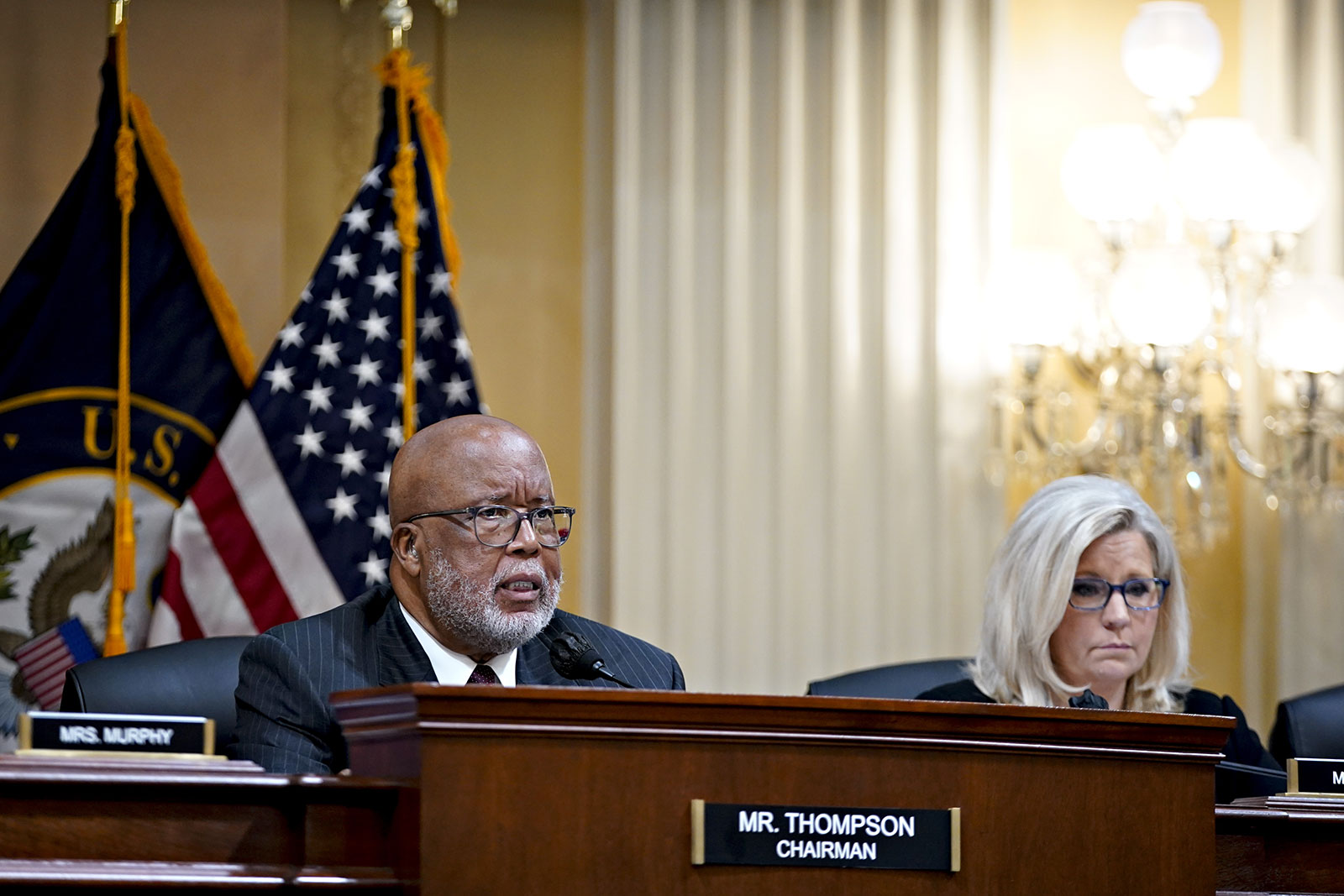
Democratic Rep. Bennie Thompson and GOP Rep. Liz Cheney, the chair and vice chair of the House select committee investigating the Jan. 6 attack on the US Capitol, said in a statement they “have concerns” about how the US Secret Service cell phone data was deleted after receiving documents from the agency in response to its subpoena.
“We have concerns about a system migration that we have been told resulted in the erasure of Secret Service cell phone data,” Thompson and Cheney said.
The new statement comes in response to the ongoing questions around the Secret Service erasing text messages from Jan. 5 and 6, 2021, shortly after they were requested by oversight officials investigating the agency’s response to the US Capitol riot.
The leaders of the House select committee point out that the Secret Service system migration process went forward on Jan. 27, 2021, even after a request was made.
“Four House committees had already sought these critical records from the Department of Homeland Security before the records were apparently lost,” they stated.
Thompson and Cheney also raise questions about the procedure for how content is preserved prior to the purge of cell phone data.
“The procedure for preserving content prior to this purge appears to have been contrary to federal records retention requirements and may represent a possible violation of the Federal Records Act,” they said.
The committee reiterated its concern on Twitter Wednesday, saying the Secret Service migration process happened “just three weeks after the attack on the Capitol in which the Vice President of the United States while under the protection of the Secret Service, was steps from a violent mob hunting for him.”
The statements come in response to the thousands of pages the Secret Service turned over to the committee, which only included one text message.
The Secret Service agency has previously explained that it was up to employees to conduct the necessary preservation of records from their phones. The letter said the service did provide personnel with a “step-by-step” guide to preserve mobile phone content, including text messages, prior to the phone migration that began Jan. 27. It went on to explain that “all Secret Service employees are responsible for appropriately preserving government records that may be created via text messaging.”
The Secret Service wrote in the letter that it was still working to determine if any relevant information was lost in the phone migration but said it was “currently unaware of text messages issued by Secret Service employees” that were requested by the inspector general “that were not retained.
Read the tweets:
These are the 9 lawmakers on the committee investigating the Jan. 6 Capitol riot
From CNN’s Annie Grayer and Ryan Nobles
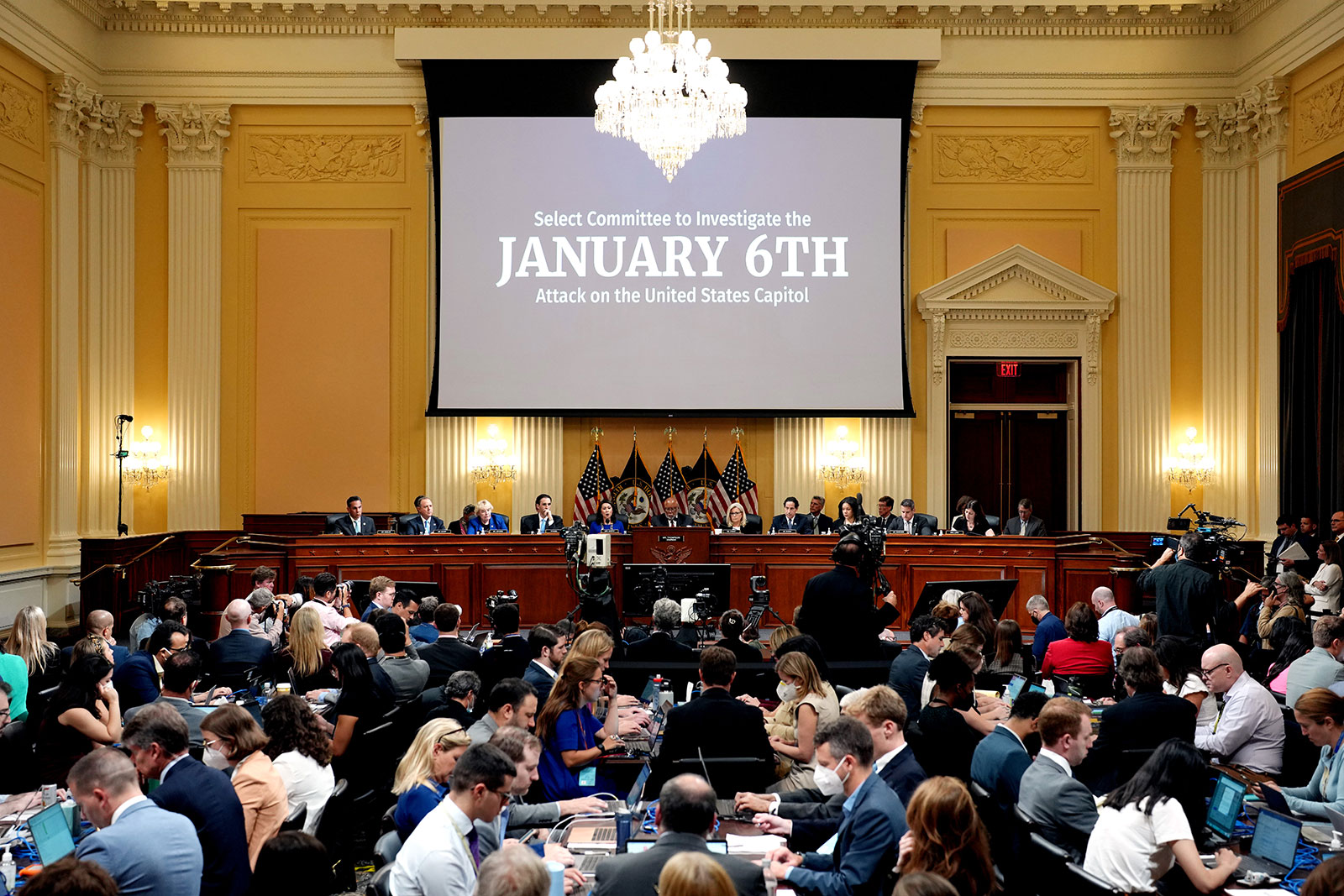
Members of the House select committee have been investigating what happened before, after and during the Jan. 6 attack on the Capitol — and now they are presenting what they discovered to the public.
The committee is made up of seven Democrats and two Republicans. It was formed after efforts to create an independent 9/11-style commission failed.
Rep. Liz Cheney is one of two Republicans on the panel appointed by House Speaker Nancy Pelosi, a Democrat from California, after House Minority Leader Kevin McCarthy pulled all five of his selections because Pelosi would not accept two of his picks. In July 2021, Pelosi invited GOP Rep. Adam Kinzinger of Illinois to join the committee, making him the second GOP lawmaker to sit on the committee.
Here’s who is on the panel — and key things to know about them:
- Rep. Bennie Thompson, chair: Thompson, a Democrat from Mississippi, is the chair of the House select committee. Thompson also serves as chair of the Homeland Security Committee, the first ever Democrat to hold the position. As chair of the Homeland Security panel, Thompson introduced and oversaw the House’s passage of the legislative recommendations after the September 11, 2001, terrorist attacks. Thompson is a civil rights pioneer who started his political career by registering fellow African Americans to vote in the segregated South. His first political victory was being elected the first Black mayor of his hometown of Bolton, Mississippi. He is the only Democrat serving in Mississippi’s delegation. Thompson views the work of the Jan. 6 committee in the same vein as his work in the civil rights struggle.
- Rep. Pete Aguilar: Aguilar is a Democrat from Southern California. Before coming to Congress, he served as the mayor of Redlands, California. Aguilar is considered a rising star in the House Democratic Caucus. As vice chair of the House Democratic Caucus he is the highest-ranking Latino member in congressional leadership. In addition to his role on the Jan. 6 committee, Aguilar has several high-profile committee assignments. He also is a member of the committees on Appropriations and House Administration. Aguilar believes the committee’s most important job is creating a full, comprehensive record of what led to the violence of Jan. 6, 2021.
- Rep. Zoe Lofgren: Lofgren is a Democrat from California who served as an impeachment manager in the first impeachment trial against Trump. Lofgren is also chair of the Committee on House Administration. She was first elected to Congress in 1994 and also served as a staffer on Capitol Hill for eight years. Lofgren has a background as an immigration lawyer and has made reforming immigration law a key part of her portfolio as a member of Congress. She also represents a big part of the Silicon Valley and as a result has had a heavy focus on tech related issues. She is a long-time ally and friend to Pelosi. The duo has served in the California Congressional delegation together for close to three decades and both represent different parts of the bay area in Northern California.
- Rep. Elaine Luria: Luria is a Democrat from the Virginia Beach area who represents a community with a significant number of constituents connected to the military. Luria is a Navy Veteran. She served 20 years as an officer on Navy ships, retiring as a commander. She has attributed her military background as part of her motivation for serving on the Jan. 6 committee and getting to the bottom of what happened on that day. Of the nine members of the committee, Luria is facing the toughest general election in the fall midterms.
- Rep. Stephanie Murphy: Murphy is a Democrat from Florida and is the first Vietnamese American woman elected to Congress. Before serving in Congress, Murphy was a national security specialist in the office of the US Secretary of Defense. Murphy said the challenge for committee members is to translate the mountains of information learned through the investigation into a digestible narrative for the American people. Murphy announced in December 2021 that she would not be seeking reelection.
- Rep. Jamie Raskin: Raskin is a Democrat from Maryland who previously served as the lead impeachment manager for Democrats during Trump’s second impeachment trial. In the days before the Capitol insurrection, Raskin announced the death by suicide of his 25-year-old son, Tommy, on New Years Eve 2020. Raskin reflected on the tragic loss of his son, and his experience living through the attack on the Capitol, in his book “Unthinkable: Trauma, Truth and the Trials of American Democracy.” Raskin said that becoming the lead House impeachment manager last year served as a “lifeline” in the aftermath of his son’s death, describing to David Axelrod on “The Axe Files” podcast how Pelosi asked him to lead the second impeachment managers.
- Rep. Adam Schiff: Schiff is a Democrat from California and also serves as the chair of the House Permanent Select Committee on Intelligence. He was the lead impeachment manager representing Democrats during Trump’s first impeachment trial. “January 6 will be remembered as one of the darkest days in our nation’s history. Yet, more than a year later, the threat to our democracy is as grave as ever. January 6 was not a day in isolation, but the violent culmination of multiple efforts to overturn the last presidential election and interfere with the peaceful transfer of power for the first time in our history,” Schiff said in a statement to CNN.
Republicans
- Rep. Liz Cheney, vice chair: Cheney, who represents Wyoming, serves as the vice chair on the committee. Cheney has been an outspoken critic of former President Donald Trump and was one of 10 House Republicans to vote to impeach him. House Republicans have punished her for her public opposition to Trump by removing her as their party’s conference chair in May of last year and she faces a Trump-endorsed challenger in the GOP primary in her reelection bid. That primary is in August. Cheney told CBS in an interview that aired over the weekend that she believes the January 6 attack was a conspiracy, saying when asked, “I do. It is extremely broad. It’s extremely well organized. It’s really chilling.” She has even gone as far to say that Trump’s inaction to intervene as the attack unfolded was a “dereliction of duty.”
- Adam Kinzinger: Kinzinger of Illinois broke with his party by accepting the appointment from Pelosi. Kinzinger, once thought to have a bright future in GOP politics, has taken heavy criticism from his colleagues because of his criticism of Trump. He has placed much of the blame of inciting the violence that day on Trump and his allies. Kinzinger is one of 10 Republicans who voted twice to impeach Trump after the Capitol insurrection. He also voted for the bipartisan independent commission to investigate the riot. His willingness to take on Trump led to the former President personally promising to back a primary opponent. Instead of facing the prospect of a Trump back challenge, he chose to retire from Congress at the end of his current term.
Source: https://www.cnn.com/politics/live-news/january-6-hearings-july-21/index.html















